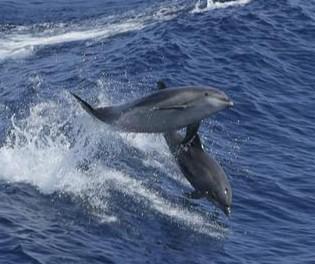
AI to Understand Dolphins’ Language, Interpret Responses Launched by Google
For centuries, humans have been fascinated by the intelligent and social behavior of dolphins. These marine mammals have been observed using a variety of clicks, whistles, and body language to communicate with each other. However, until now, we have been unable to fully understand the complexity and nuances of their language. Google has recently launched DolphinGemma, an AI model that can identify recurring sound patterns to help uncover hidden structures and potential meanings of the natural communication methods of dolphins.
The launch of DolphinGemma is a significant breakthrough in the field of animal-computer interaction and has the potential to revolutionize our understanding of dolphin communication. By developing an AI model that can interpret dolphin language, scientists and researchers may be able to establish a vocabulary, allowing humans to potentially communicate interactively with dolphins.
DolphinGemma uses machine learning algorithms to analyze the patterns and structures of dolphin vocalizations. The model is trained on a large dataset of dolphin sounds, which allows it to identify recurring patterns and predict the sounds that dolphins may make next. This ability to predict dolphin sounds could be particularly useful in situations where humans need to communicate with dolphins in real-time, such as in marine conservation and research efforts.
The development of DolphinGemma is the result of a collaboration between Google’s AI and research teams, as well as a group of scientists from the University of California, San Diego. The project was led by Dr. Mike Dawson, a professor of psychology and cognitive science at the University of California, San Diego. Dr. Dawson and his team have been studying dolphin language and behavior for many years and have made significant contributions to our understanding of dolphin communication.
According to Dr. Dawson, the development of DolphinGemma is an important step towards understanding dolphin language. “By using machine learning algorithms to analyze dolphin vocalizations, we can identify patterns and structures that may not be immediately apparent to the human ear. This could help us to develop a vocabulary of dolphin language and potentially even enable humans to communicate with dolphins in real-time.”
The potential applications of DolphinGemma are vast and varied. In addition to its use in marine conservation and research efforts, the model could also be used to improve our understanding of dolphin behavior and social structures. For example, by analyzing the vocalizations of dolphins in different social groups, researchers may be able to gain insight into the dynamics of dolphin societies and how they interact with each other.
DolphinGemma could also have practical applications in the field of dolphin-assisted therapy. Dolphin-assisted therapy is a type of therapy that involves interacting with dolphins in a controlled environment. The therapy has been shown to have a number of benefits for people with physical, emotional, and cognitive disabilities. By using DolphinGemma to communicate with dolphins, therapists may be able to provide even more effective and personalized treatment plans for their clients.
The launch of DolphinGemma is also significant because it highlights the potential for AI to be used in a wide range of applications beyond human language. The model’s ability to identify patterns and structures in dolphin vocalizations demonstrates the power of machine learning algorithms to uncover hidden structures and patterns in complex data sets.
In conclusion, the launch of DolphinGemma is a significant breakthrough in the field of animal-computer interaction and has the potential to revolutionize our understanding of dolphin communication. By developing an AI model that can interpret dolphin language, scientists and researchers may be able to establish a vocabulary, allowing humans to potentially communicate interactively with dolphins. The potential applications of DolphinGemma are vast and varied, and the model has the potential to make a significant impact in a wide range of fields.






